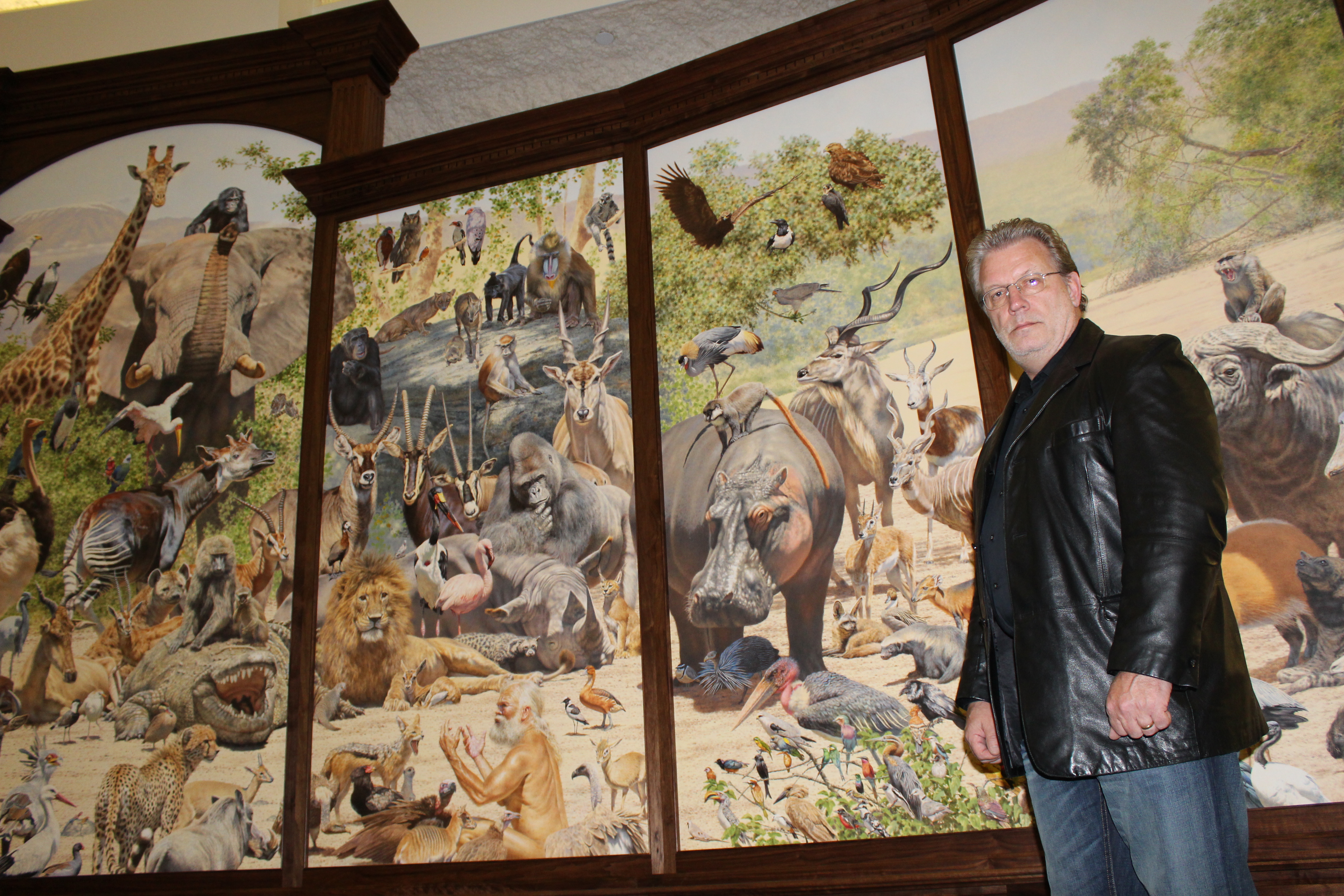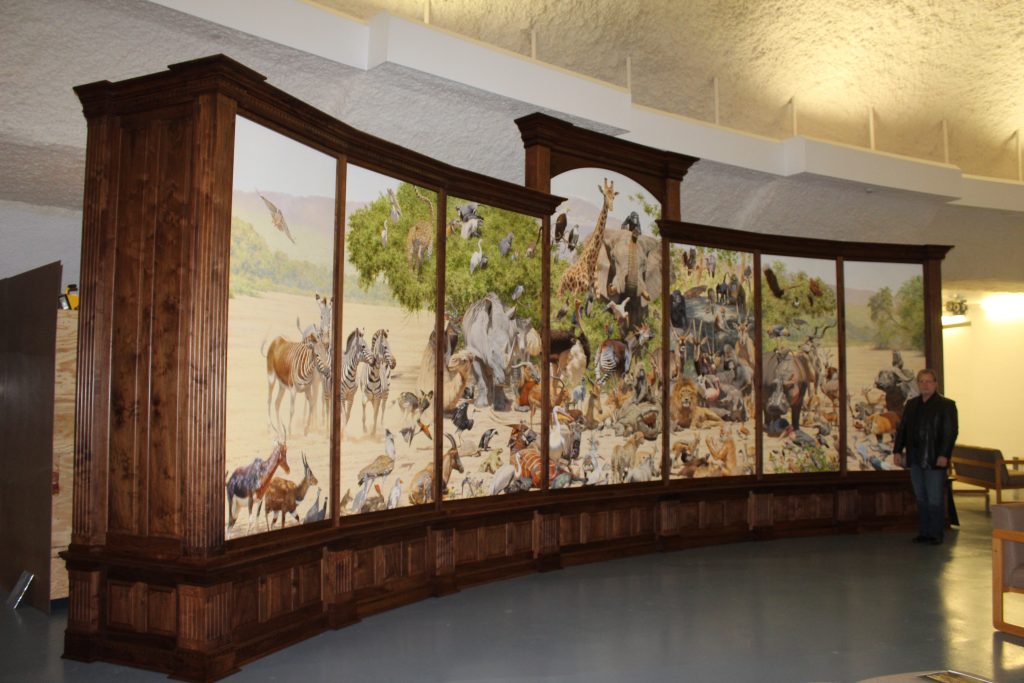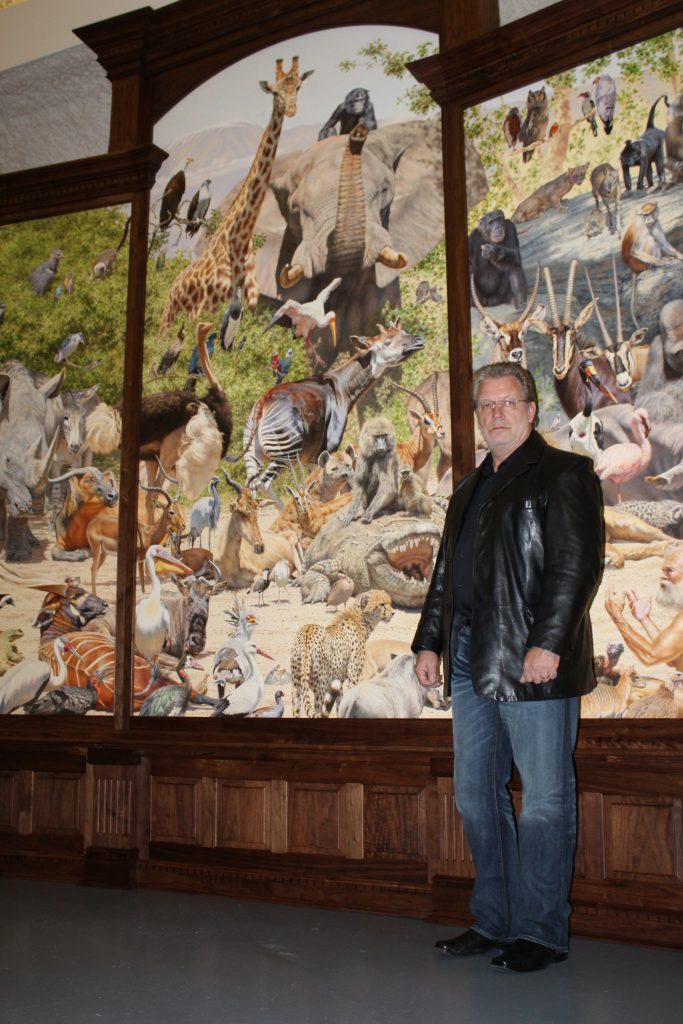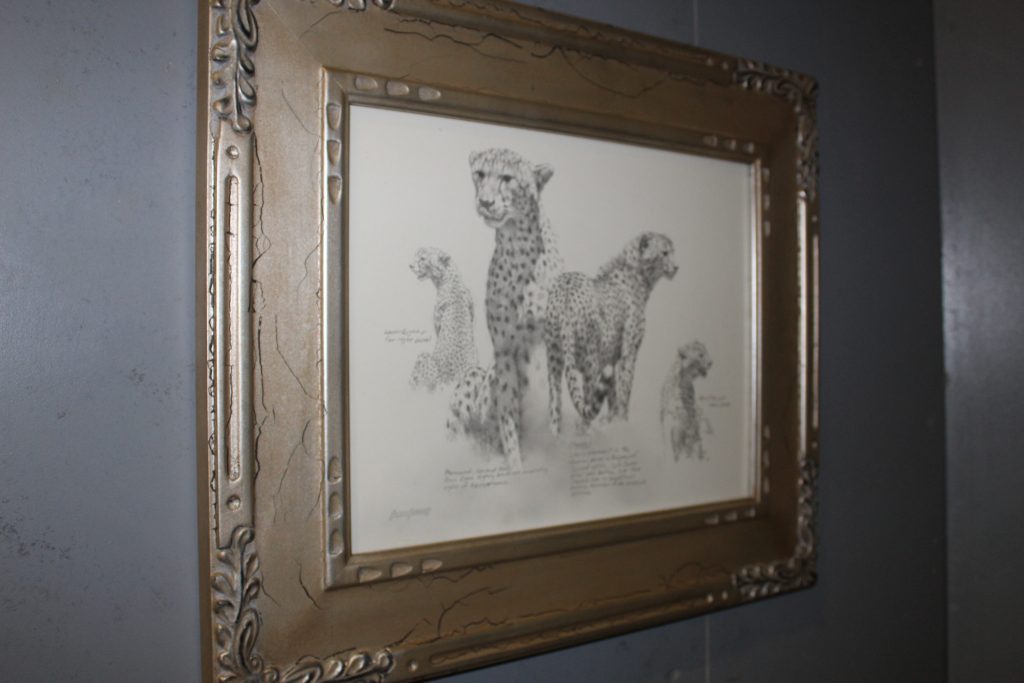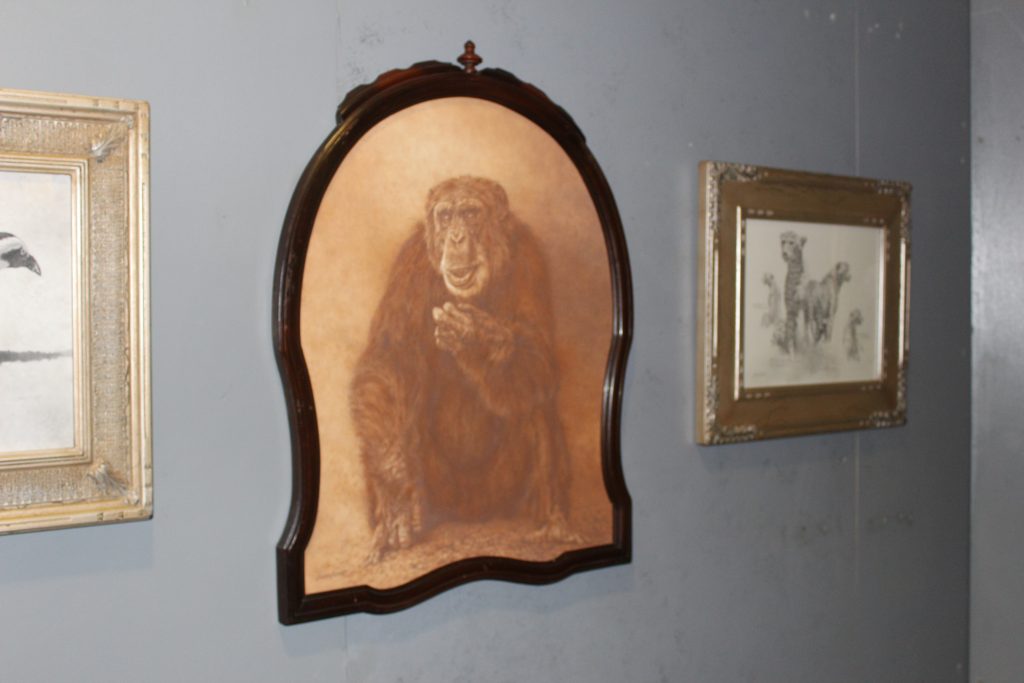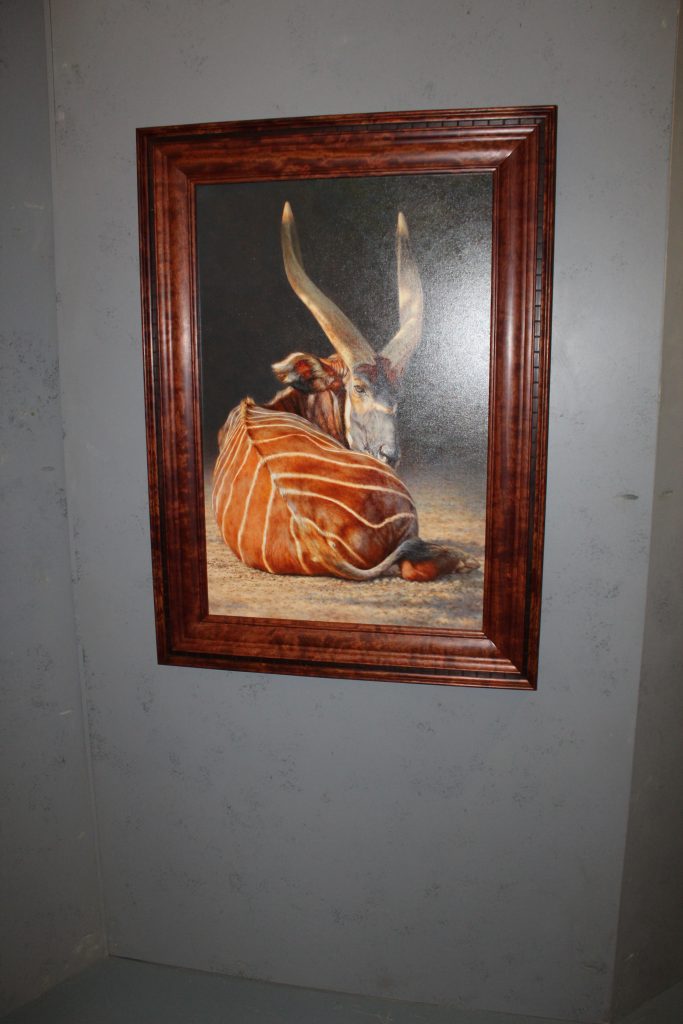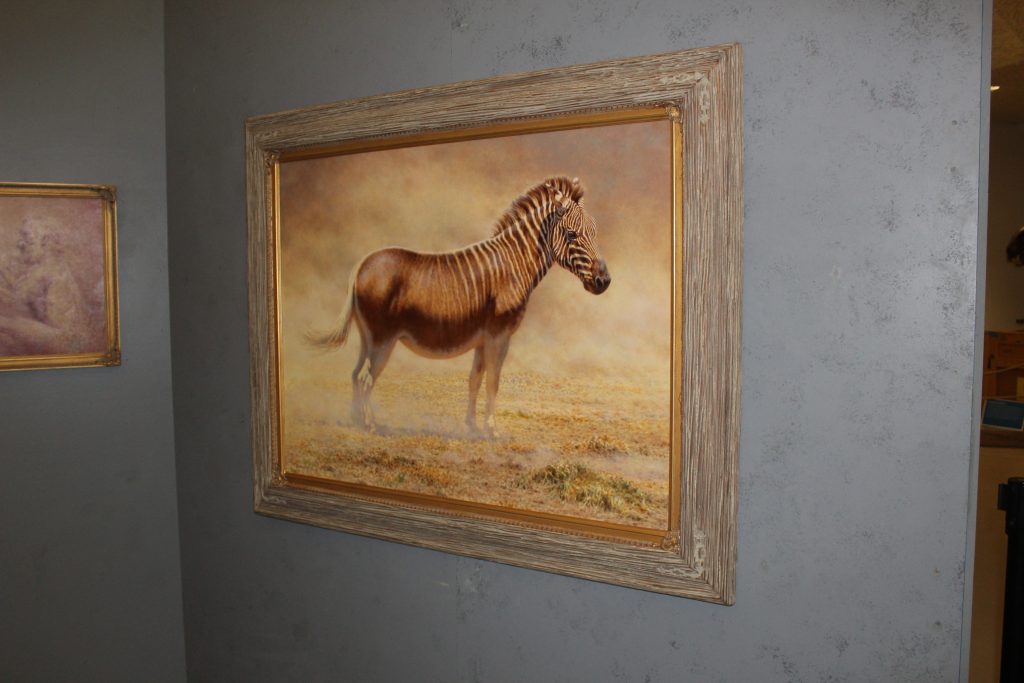“The African Menagerie: An Inquisition” is more than a painting. It is a culmination of Brian Jarvi’s career spent painting African wildlife.
The seven-panel piece depicts 209 species of mammals, birds and reptiles — 150 of which Jarvi had never painted before he took on this project.
An exhibit featuring the art piece opens Saturday at the Sternberg Museum of Natural History in Hays and runs through Dec. 21.
The piece took Jarvi 17 years to create and is 32 feet wide and 14 feet high. The Sternberg is first stop for the piece since its debut on Sept. 16 at The Reif Center for the Performing Arts, in Grand Rapids, Minn., Jarvi’s hometown. The piece is oil on Belgium linen that is mounted on Masonite.
Jarvi said this might be the most significant wildlife painting in history based on the size of the work and number of species represented.
Forty of the artist’s sketches, which range from drawings to large oil paintings, surround the final work.
He said his biggest challenge was scaling all the different species to each other and creating a consistent light source on all the subjects.
Among the sketches is a painting of a quagga, an extinct species of zebra. The animal has been extinct since the 1870s and only six known photos of the animal exist, all of which are black and white. Jarvi said recreating an image of this animal required the most research and study.
Jarvi, 61, is a self-taught artist. He said his love of wildlife started when he was a child, collecting frogs and fish out of the local ponds of northern Minnesota. He began his artistic career in Minnesota drawing and painting waterfowl.
He repeatedly entered the Minnesota Duck Stamp competition in the mid-80’s and finally won. This was soon followed by a win of the Minnesota Pheasant Stamp competition. This not only gave him notoriety but enough prize money to pursue his love of art and wildlife full time.
He was commissioned to paint his first pieces of African wildlife about 30 years ago. He, along with a group of other artists, were sent to Africa for a month to observe, sketch and photograph the continent’s wildlife. He has since traveled to Africa 12 more times.
“I sort of eat, sleep and breathe Africa,” he said. “The first thing I do in the morning is check the television for any African documentaries on that day. I do a lot of research beyond just the field research.”
The portraits in the “The African Menagerie” are somewhat of a departure from Jarvi’s typical paintings, which usually portray predator/prey interactions. He most loves depicting lions, and a male lion prominently appears in the “The African Menagerie.”
Other iconic species included in the work include hippo, elephant, giraffe, rhino and leopard. These are joined by lesser-known species, such as bongo, okapi and mandrill.
“The African Menagerie” portrays the plight of wildlife and the environment at the hands of man. Jarvi said the concept for the painting is all the species have come to judge man for his actions against the environment.
The snow on Mount Kilimanjaro in the background is receding, a nod to the effects of global warming. Although the piece is not meant to be seen in a wholly biblical context, there is religious symbolism in the work, including the lion lying down with the lamb near the human figure and the four zebra, which are symbols of Four Horsemen of the Apocalypse in the far left panel.
“I hope they get a better appreciation of the grand array of subject matter and the wildlife there is on the African continent, let alone across the world,” Jarvi said of those who view the “The African Menagerie.” “Certainly there is a message of conservation in this work.”
There are definitely species that most would recognize as under threat in the painting, including the elephant and the rhino, but Jarvi noted they are pieces in a larger ecosystem.
“We have a tendency to focus on the great icons of Africa and other species around the world in regards of the possibility of them going extinct, but it goes hand in hand. If these species are in trouble, these lesser-known species are in the same situation. Extinction is not that selective, especially the current one that is going on.
“I thought it was important to put some of these lesser-known species side by side with some of the icons of Africa,” he said.
Documenting the project will be a coffee-table book by Todd Wilkinson. The book also includes other images from Jarvi’s career and the tale of his rise as an artist. Preorders are now being taken for the book.
Now that Jarvi has completed “The African Menagerie,” he is looking back to his roots for his next project and hopes to complete a piece titled “The Ducks, Geese and Swans of North America.”
